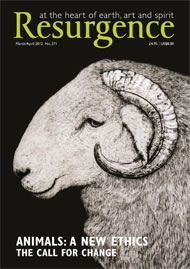It is rare for me to read a book, every sentence of which I not only agree with, but also learn from, and savour too. But that is the case here. And the photos are sensational. I open the book at random, to page 115. There is a photo of prairie dogs in Denver, Colorado. Here is what Jonathan Balcombe writes to describe the photo: “Highly social, prairie dogs are also intensely affectionate toward family and other close members of their colony. Greeting behavior can be ecstatic. Here a mother is surrounded by at least five pups, some of which may not be her own. The pup on the left is doing a ‘jump-yip’ call, which may function as an all-clear signal and is so explosive that it sometimes causes the caller to fall over backward.” How can you resist anything in that description? Makes you want to hightail it out to Denver and see for yourself.
Or consider the magnificent photo on page 180 of a fox running through a golden field in Buffalo Gap National Grassland in South Dakota. “How are we to know what this fox is feeling as he bounds across a field? I chose it because it expresses a fundamental value: freedom.” Wow! He sees a photo of ospreys in a nest on the Columbia River in Washington where a recently fledged chick is about to take off on her first flight. “As her confidence blooms, we can imagine that the exhilaration of being airborne soon overtakes the fear.”
There are many wonderful passages in this unique book. I love that Balcombe accords fish the respect they deserve and almost never get. I remember once standing in the lobby of a hotel in Las Vegas, which had a huge but narrow wall that was an aquarium. The fish looked lost. A woman came up to the wall. Her husband turned away in disdain. “They’re goldfish: they have three-second memories. They don’t care where they are!” How wrong he was. Here is Balcombe: “Because fishes don’t make facial expressions, because they don’t scream or shout, many people continue to deny that they are capable of pain or suffering. But fishes manifest their fear and pain in other ways, including the release of fear and pain chemicals. Fishes have long-term memories, they recognize familiar individuals and have social preferences, they cooperate, and they have disputes and then reconcile.” And for every statement he provides a backup reference. This is science at its best: correcting false views and providing correctives in gentle and pleasant ways; Balcombe is not a polemicist.
The book is also full of new information. I thought I knew how many animals are killed for food every year around the world, but I did not know it was 60 billion! Then another 60 billion fish! I didn’t know that the snapping of shrimp claws can be heard up to 20 kilometres away. I didn’t know that squirrels can be sassy, and tease cats.
I didn’t know that many fish give off an ‘alarm’ pheromone when confronted with danger. Or that octopuses not only have individual personalities (that stands to reason), but recognise individual humans too.
How many authors, especially scientists, are willing to give insects a fair shake? Balcombe admits he doesn’t know what they feel, but he gives them the benefit of the doubt. He is uneasy about denying feelings to an ant: “Wherever we decide to draw our imaginary lines, we should draw them in pencil.”
As for farm animals, well, he is in your face, and rightly so: we should not even call them that, but rather “farmed animals”, since “it’s not a role they chose but one we’ve imposed on them.” And chickens, he reminds us, have at least 30 different calls! Do you really want to eat an animal who begs her friends to come and save her when she is about to be slaughtered?
I love that he considers the possibility that some animals feel some emotions more deeply than we do, and conversely, some animals suffer more than a human would under similar circumstances, because we can anticipate a future without suffering, whereas for the animals, as Bernard Rollin puts it, “their whole universe is pain; there is no horizon, they are their pain.”
Balcombe long ago gave up eating any animal or animal product. How many other animal scientists can say the same? He knows and declares that “we are much more similar to animals – from cats and dogs to pigs and chickens – than we once believed.” And then he draws the inescapable conclusion: “Most of the animals we kill don’t need to die… about 98 percent are killed to be eaten, and most of us can choose to eat other foods.” Yes!






